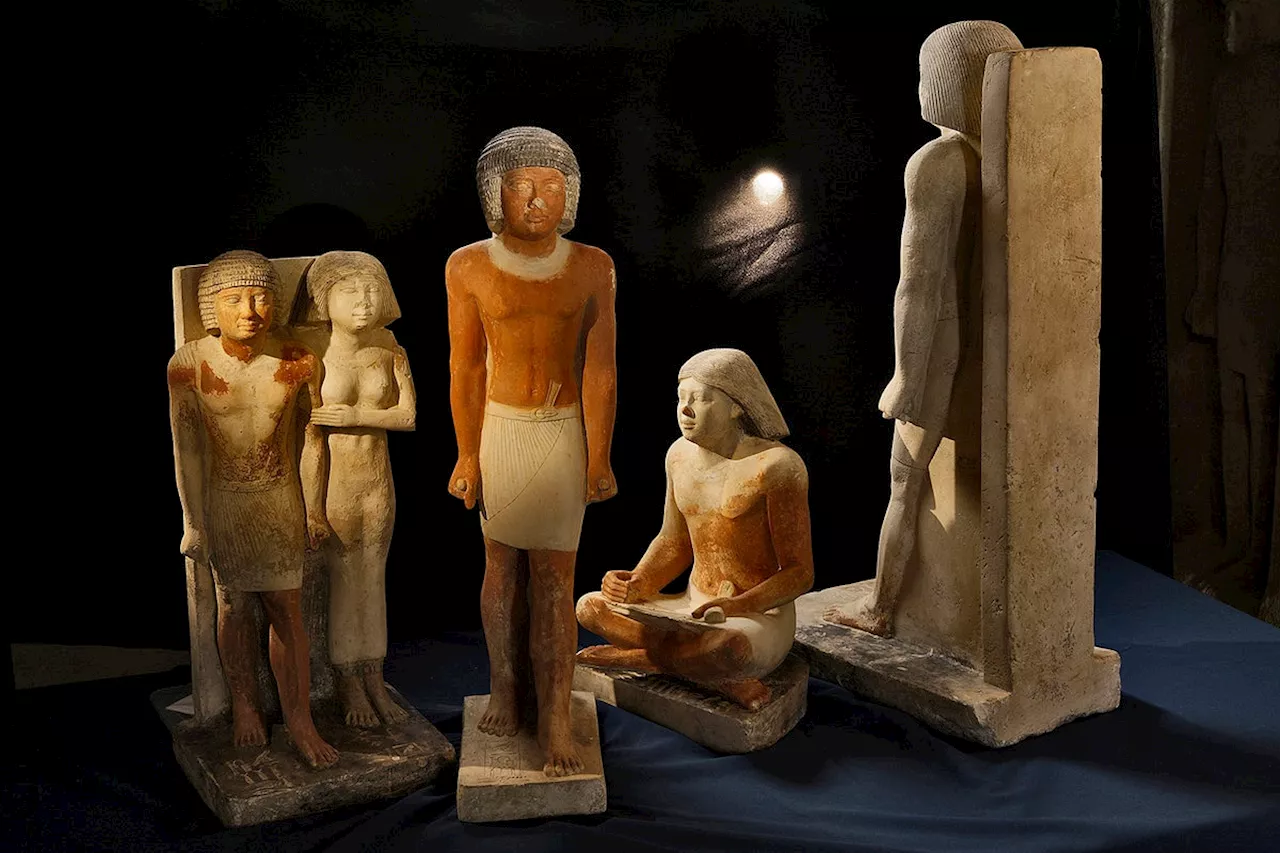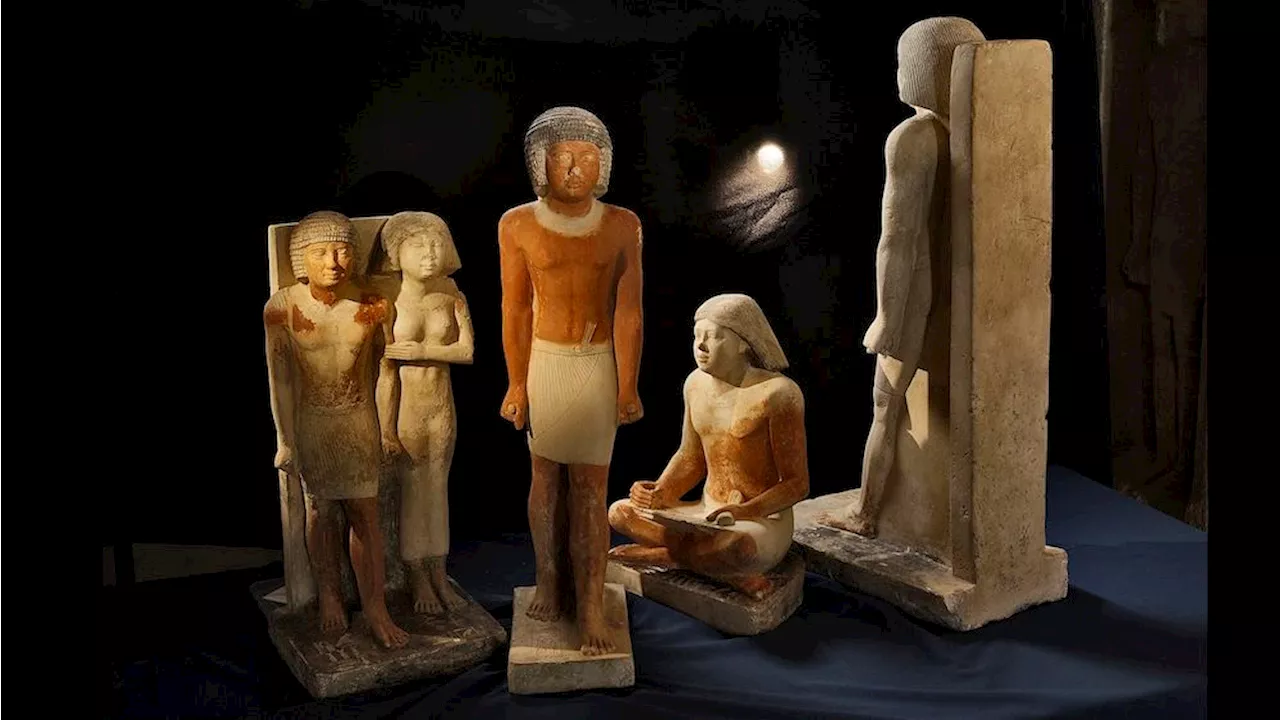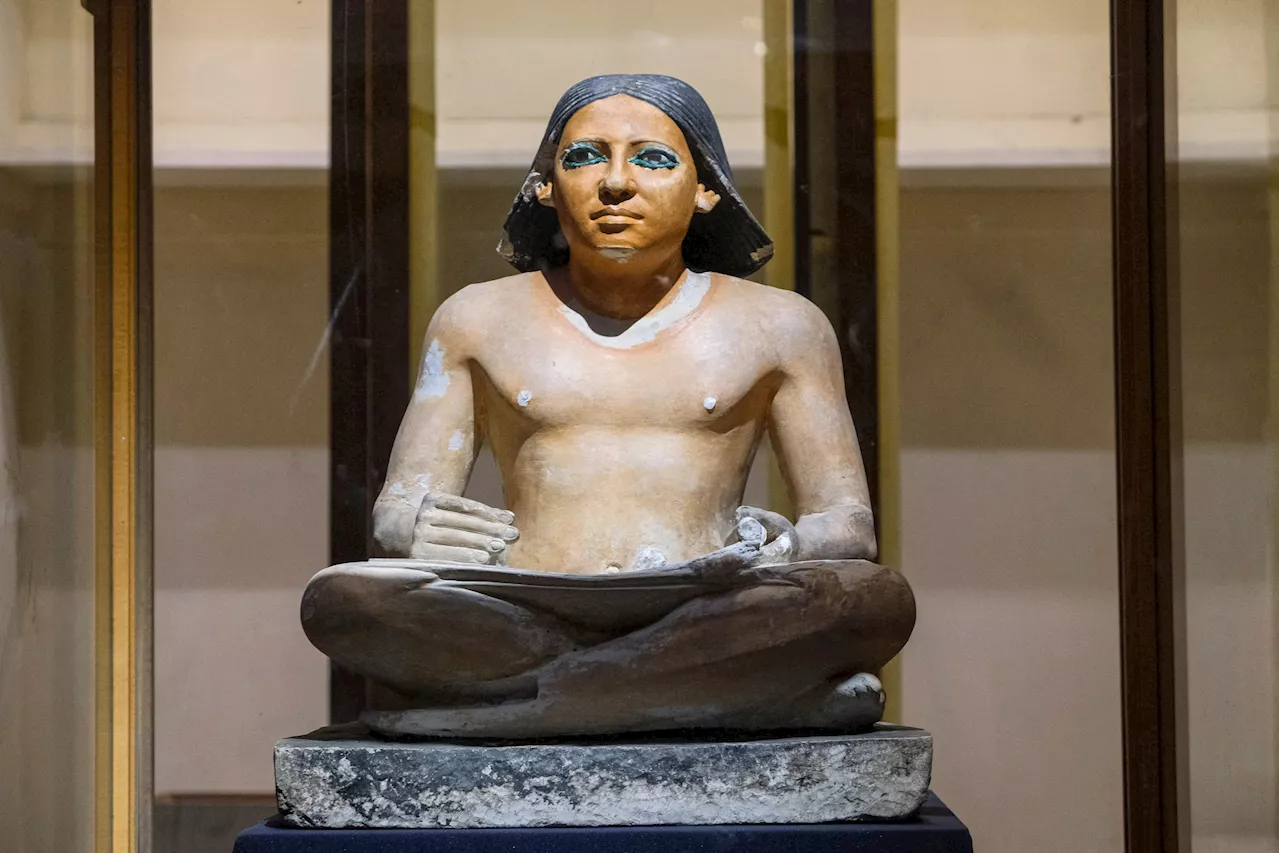Years of hunching over, chewing pens and gripping brushes left the skeletons of Egyptian scribes with telltale marks of arthritis and other damage.
where the men sat cross-legged or kneeled hunched over papyrus scrolls, researchers describe June 27 inMuseum and university researchers from the Czech Republic examined the remains of 69 men entombed in the necropolis at Abusir, Egypt, dating from 2700 B.C. to 2180 B.C. Titles, paintings, tools and statues found in the tombs denoted 30 of the skeletons as scribes, high-ranking people who worked in various administrative positions and were engaged in writing and reading.
Being a scribe wasn’t a physically demanding job, but over time, it took its toll on select body parts, the researchers found. Scribes were more likely than their household members or other high-ranking people to have degenerative changes to their bones, especially in their upper bodies. For instance, scribes chewed rushes to make brushes for writing. That left the men with arthritis in the temporomandibular joints of their jaws, the researchers found. About 16 percent to 38 percent of people today are estimated to have TMJ arthritis. A comparable 30 percent of the ancient non-scribes also had arthritis in their jaws, but in scribes, the rate was more than double at 64 percent. The work left similar wear-and-tear in particular spots from head to toe .
Today’s scribes and scrollers might take heed of the ancient Egyptian scribe’s neck and jaw issues to sit a bit a straighter and look up from their phones once in a while.From head to toe, working as a scribe in ancient Egypt left its mark on particular parts of the body . Chewing on brushes and thrusting their heads forward over their work gave scribes arthritis in their jaws.
Pitting, ridges or spurs where tendons and ligaments connected to bones marked their left sitz bone, the bony point at the bottom of the pelvis, indicating that they often rested on their left hips. But this damage might not have been career-specific: Kneeling and squatting was common for everyone at the time, the researchers say.
United States Latest News, United States Headlines
Similar News:You can also read news stories similar to this one that we have collected from other news sources.
 Ancient Egyptian Scribes Suffered Back Pain, TooThe skeletons of scribes from ancient Egypt show deterioration from sitting and kneeling
Ancient Egyptian Scribes Suffered Back Pain, TooThe skeletons of scribes from ancient Egypt show deterioration from sitting and kneeling
Read more »
 Ancient Egyptian 'office workers' had terrible posture just like us, disfigured skeletons revealJennifer Nalewicki is a Salt Lake City-based journalist whose work has been featured in The New York Times, Smithsonian Magazine, Scientific American, Popular Mechanics and more. She covers several science topics from planet Earth to paleontology and archaeology to health and culture. Prior to freelancing, Jennifer held an Editor role at Time Inc.
Ancient Egyptian 'office workers' had terrible posture just like us, disfigured skeletons revealJennifer Nalewicki is a Salt Lake City-based journalist whose work has been featured in The New York Times, Smithsonian Magazine, Scientific American, Popular Mechanics and more. She covers several science topics from planet Earth to paleontology and archaeology to health and culture. Prior to freelancing, Jennifer held an Editor role at Time Inc.
Read more »
 Ancient Egyptian Scribes Faced 'Occupational Risk' TooThe remains of individuals buried in a necropolis during the 3rd millennium B.C. have shed new light on the lives of these scribes.
Ancient Egyptian Scribes Faced 'Occupational Risk' TooThe remains of individuals buried in a necropolis during the 3rd millennium B.C. have shed new light on the lives of these scribes.
Read more »
 Occupational hazards for ancient Egyptian scribesRepetitive tasks carried out by ancient Egyptian scribes—high-status men with the ability to write who performed administrative tasks—and the positions they sat in while working may have led to degenerative skeletal changes, according to a study published in Scientific Reports.
Occupational hazards for ancient Egyptian scribesRepetitive tasks carried out by ancient Egyptian scribes—high-status men with the ability to write who performed administrative tasks—and the positions they sat in while working may have led to degenerative skeletal changes, according to a study published in Scientific Reports.
Read more »
 Ancient Egyptian scribes suffered bone damage from working long hours in hunched positionsLaura is a science news writer, covering a wide variety of subjects, but she is particularly fascinated by all things aquatic, paleontology, nanotechnology, and exploring how science influences daily life. Laura is a proud former resident of the New Jersey shore, a competitive swimmer, and a fierce defender of the Oxford comma.
Ancient Egyptian scribes suffered bone damage from working long hours in hunched positionsLaura is a science news writer, covering a wide variety of subjects, but she is particularly fascinated by all things aquatic, paleontology, nanotechnology, and exploring how science influences daily life. Laura is a proud former resident of the New Jersey shore, a competitive swimmer, and a fierce defender of the Oxford comma.
Read more »
 'Exceptional' discovery reveals more than 30 ancient Egyptian tombs built into hillsideKristel is a science writer based in the U.S. with a doctorate in chemistry from the University of New South Wales, Australia. She holds a master's degree in science communication from the University of California, Santa Cruz. Her work has appeared in Drug Discovery News, Science, Eos and Mongabay, among other outlets.
'Exceptional' discovery reveals more than 30 ancient Egyptian tombs built into hillsideKristel is a science writer based in the U.S. with a doctorate in chemistry from the University of New South Wales, Australia. She holds a master's degree in science communication from the University of California, Santa Cruz. Her work has appeared in Drug Discovery News, Science, Eos and Mongabay, among other outlets.
Read more »
